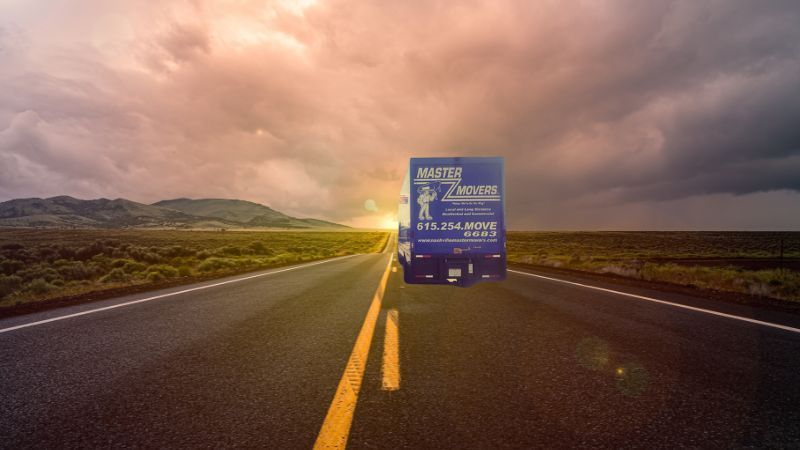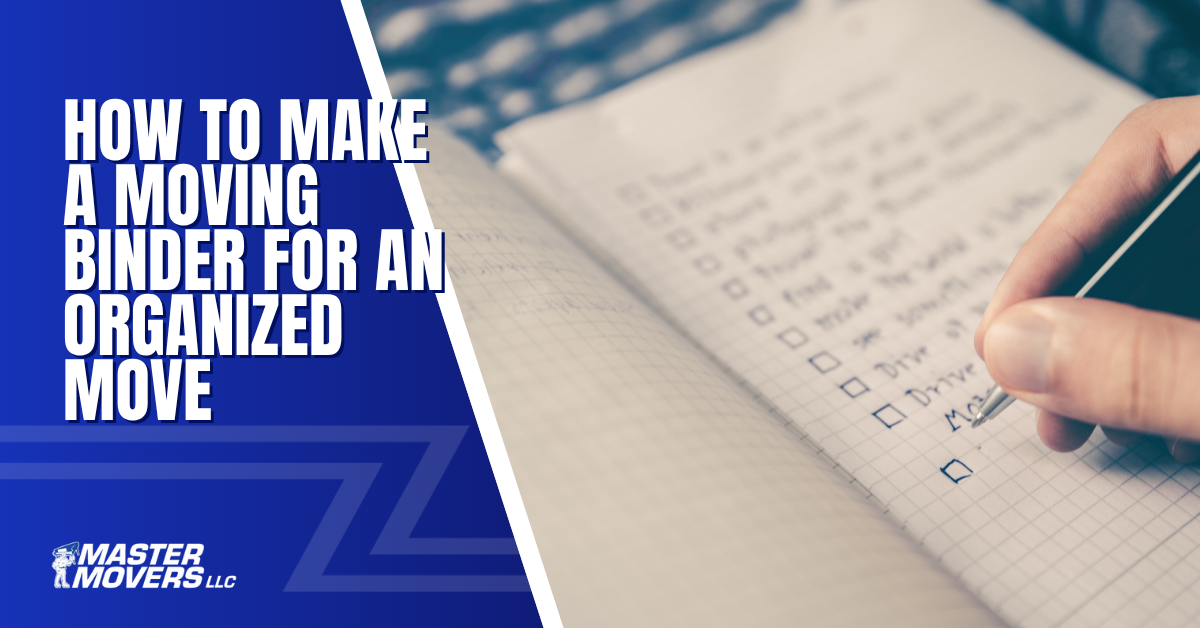Key Checklist for Long Distance Moving
June 7, 2024

Preparing for a long-distance move involves several crucial steps to ensure everything goes smoothly. Moving long distances may be a daunting task, but with this checklist and Nashville Master Movers, our full-service
moving company based in Nashville, TN
, takes care of every aspect of your long-distance move. Let's break down the key elements to help you get started.

Understanding the Scope of a Long-Distance Move
Long-distance moves are typically more complex compared to local moves. A professional moving company like Nashville Master Movers not only has the experience and resources to handle such moves, but they also have the necessary authorizations and licenses to be your go-to when choosing long distance movers . We are always ready to help you to succeed in your move. They often involve greater distances, more logistical planning, and a larger budget. Key Considerations:- Distance & Planning: Moving across states or even countries requires detailed planning. Make sure to consider the different routes, time zones, and any stopovers needed.
- Legal Requirements: Check for necessary permits or paperwork needed to transport your belongings across state or country lines.
Budgeting for a Long-Distance Move
Creating a budget is one of the first steps to take when planning your move. Costs can quickly add up, so it's important to be aware of all potential expenses. Budget Breakdown:- Moving Company Fees: Professional movers often charge based on the weight of your items and the distance to be covered.
- Packing Supplies: Boxes, tape, bubble wrap, and other packing materials.
- Travel Expenses: Include costs for gas, lodging, and meals during your journey.
- Insurance: Protect your belongings with appropriate moving insurance.
- Hidden Costs: Be mindful of hidden or unexpected costs like temporary storage fees or tips for movers.
Creating a Timeline and Schedule
Planning ahead is vital for a successful move. A well-structured timeline can help you manage the move without last-minute stress.Deciding on DIY
Choosing between a DIY move and hiring professional movers depends on your needs and budget. Pros and Cons:- DIY Move:
- Pros:
- Lower cost
- Full control over the process
- Cons:
- Requires significant time and effort
- Potential for physical strain or injury
Decluttering and Organizing
To make your long-distance move as smooth as possible, it's important to declutter and organize before packing. This can save you time, money, and effort.Sorting Through Belongings
Start by going through all your possessions to decide what to keep, donate, or discard. Steps to Declutter:- Create Categories: Make piles for keep, donate, sell, and discard.
- Ask Yourself: Have I used this in the last year? Does it have sentimental value? Is it worth the cost to move it?
- One Room at a Time: Focus on one room before moving to the next to avoid feeling overwhelmed.
Organizing Important Documents
To ensure you don't lose important paperwork, organize your documents early on. Essential Documents:- Personal IDs: Passports, driver's licenses, birth certificates.
- Financial Records: Bank statements, tax returns, mortgage papers.
- Moving Records: Moving contracts, insurance policies, inventory lists.
- Sections: Use dividers to create sections for different types of documents.
- Digital Copies: Consider scanning important documents and storing them securely online.
Inventorying Your Items
Creating a detailed inventory of all your items will help you keep track of everything during the move. How to Create an Inventory List:- Room-by-Room: List items room by room.
- Descriptions: Include descriptions and conditions of each item.
- Photos: Take photos of valuable or fragile items.
Packing Strategies
Effective packing is crucial to ensuring your items reach your new home intact and organized. Professional movers like Nashville Master Movers can be a stress-free solution. They offer full-service moves, handling everything from packing to transportation and even packing services at your new home.Sustainable and Budget-Friendly Options
- Reuse Boxes: Ask local stores for free boxes.
- Alternative Padding: Use towels and sheets instead of bubble wrap.
Packing Room-by-Room
Packing room-by-room helps keep things organized and manageable. Step-by-Step Packing Guide:- Start with Non-Essentials: Pack non-essential items first, such as books and out-of-season clothes.
- Room Priority: Pack one room completely before moving to the next.
- Fragile Items Last: Leave breakable items for last, packing them carefully with padding.
Labeling and Color-Coding
Proper labeling can save you hours of unpacking. Effective Labeling Techniques:- Room and Contents: Clearly label each box with the room it belongs to and a summary of its contents.
- Color Code: Use different colored stickers or tape for each room to make it easier to organize boxes at a glance.
Packing an Essentials Box
Having an essentials box ensures you have necessary items easily accessible during the first few days in your new home. Items to Include:- Toiletries: Toothpaste, soap, shampoo.
- Clothing: A few changes of clothes, pajamas.
- Important Documents: Have your moving binder handy.
- Basic Kitchen Items: Plates, utensils, snacks.
Protecting Furniture and Large Items
Properly packing and protecting your furniture and large items can prevent damage during the move. Techniques for Disassembling and Packing:- Disassemble Furniture: Take apart large items when possible.
- Wrap and Cover: Use furniture covers or blankets to protect surfaces.
- Use Pads and Straps: Secure items with moving pads and straps inside the truck.
Coordinating Moving Logistics
Coordinating the logistics of your move ensures that everything runs smoothly from start to finish. Here are the key aspects to consider.Hiring Movers and Scheduling the Moving Date
Choosing the right moving company and scheduling the move are crucial steps in the process. Tips for Selecting a Moving Date:- Off-Peak Seasons: Moving during the off-peak seasons (fall and winter) can be cheaper.
- Mid-Week: Mid-week moves are often less busy and more cost-effective.
- Plan Ahead: Book your movers well in advance to secure your preferred date.
Addressing Travel Accommodations
Planning your travel and accommodations can make your move more comfortable for you and your family. Planning Your Travel:- Route Planning: Map out your route, including rest stops and overnight stays.
- Lodging: Reserve accommodations in advance, especially if traveling with pets.
- Meals: Plan for meals on the road to avoid unnecessary delays.
- Pet Carriers: Use secure and comfortable carriers for travel.
- Check Pet Policies: Make sure your accommodations are pet-friendly.
- Keep Essentials Handy: Food, water, toys, and medical records.
Updating Your Address
Ensure that key organizations and institutions have your new address. Who to Notify:- Post Office: Set up mail forwarding with USPS.
- Banks: Update your address for credit cards and bank accounts.
- Insurance Providers: Notify your health, auto, and home insurance providers.
- Employers: Inform your current employer and any other relevant workplaces.
- Subscriptions: Update magazines, meal kit deliveries, and other subscriptions.
Moving Day Essentials
The big day is finally here! Here's how to make it as stress-free as possible.Final Walkthrough of the Old Home
Perform a final walkthrough to ensure nothing is left behind. Checklist for Final Home Inspection:- Check All Rooms: Look in closets, cabinets, and drawers.
- Turn Off Utilities: Ensure that gas, water, and electricity are turned off.
- Secure Windows and Doors: Make sure everything is locked and secure.
- Clean Up: Leave the home in good condition for the next occupants..
- Arrival Time: Confirm the movers' arrival time and provide any special instructions.
- Inventory Check: Verify the inventory list with your movers.
- Contact Information: Share your contact information and keep your phone handy.
- Fragile Items: Clearly label and inform movers of any fragile items.
- Special Handling: Provide instructions for any special handling needs.
Managing Pet Care and Childcare
Ensuring the safety and comfort of pets and children is paramount on moving day. Ensuring the Safety of Pets:- Temporary Care: Consider boarding your pets or having a friend take care of them.
- Designated Space: Create a safe and quiet space for your pets during the move.
- Comfort Items: Keep their favorite toys and bedding with them.
- Babysitter: Hire a babysitter or ask a family member to help.
- Safe Play Area: Set up a safe play area away from the moving chaos.
Settling into Your New Home
You're nearly there! Here are the steps to settle into your new home comfortably.Unpacking Essentials and Prioritizing Rooms
Start by unpacking the essentials box and prioritize which rooms to set up first. Unpacking the Essentials Box First:- Immediate Needs: Ensure you have clothes, toiletries, and basic kitchen supplies.
- Nighttime Preparation: Set up beds with clean sheets to rest after a long day.
- Kitchen: Set up basic appliances and cookware.
- Bedrooms: Arrange furniture and unpack clothes.
- Living Room: Unpack electronics and seating.
Exploring the New Area
Take some time to get familiar with your new neighborhood and community. Getting Familiar with Your New Neighborhood:- Local Amenities: Find nearby grocery stores, pharmacies, and emergency services.
- Community Services: Check out parks, libraries, and recreational centers.
- Health Providers: Locate nearby hospitals, clinics, and pharmacies.
- Schools: Identify local schools and daycare centers.
- Public Transportation: Learn about public transit options and routes.
Additional Tips and Resources
Here are some extra tips and resources to make your long-distance move even smoother.Working with Relocation Consultants
Hiring a relocation consultant can provide valuable support and expertise. Benefits of Professional Relocation Services:- Personalized Assistance: Tailored help with every step of the move.
- Local Knowledge: Insights into your new area.
- Stress Reduction: Less worry with professionals handling details.
- Complex Moves: If you have a lot of belongings, special items, or are moving internationally.
- Limited Time: If you have a busy schedule and need help with coordination.
Using Technology to Assist Your Move
Leverage technology to make your move more organized and efficient. Apps and Tools for an Efficient Moving Process:- Moving Checklists: Apps like Todoist or Trello can help you stay organized.
- Inventory Tools: Use apps like Sortly to keep track of your belongings.
- Navigation: Google Maps and Waze can help plan your travel route.
- Shared Documents: Use Google Drive or Dropbox to share important documents with family.
- Calendar Sync: Sync your moving timeline with a digital calendar.
The Emotional Aspects of Long-Distance Moving
Moving can be stressful emotionally. Here are some tips for managing the transition. Managing Stress and Anxiety:- Stay Organized: Keeping your move organized can reduce stress.
- Take Breaks: Allow yourself time to rest and relax.
- Stay Positive: Focus on the opportunities and new experiences that await.
- Stay Connected: Regularly check in with family and friends.
- Explore Together: Spend time exploring your new area as a family.
- Encourage Communication: Talk about feelings and concerns openly.



